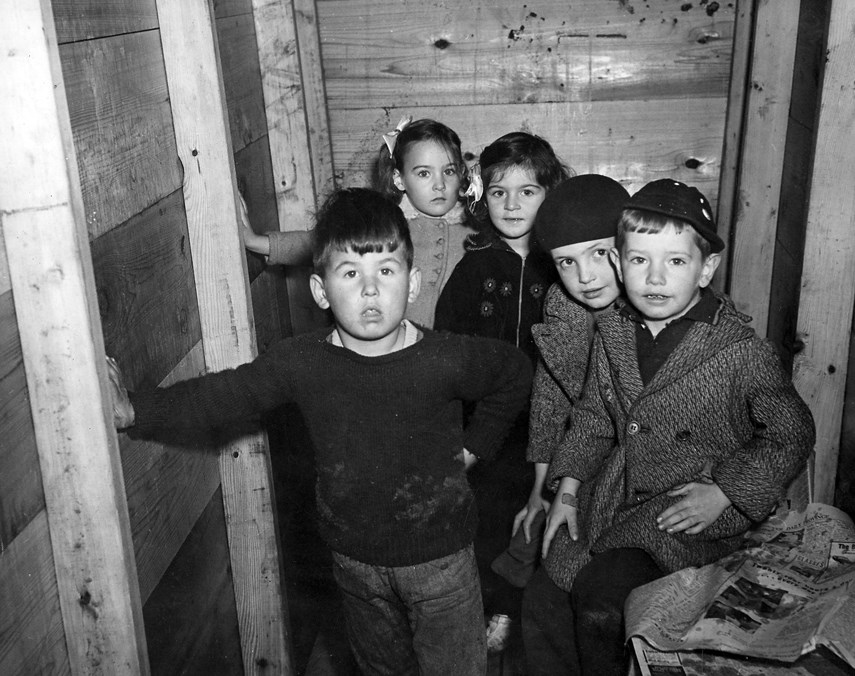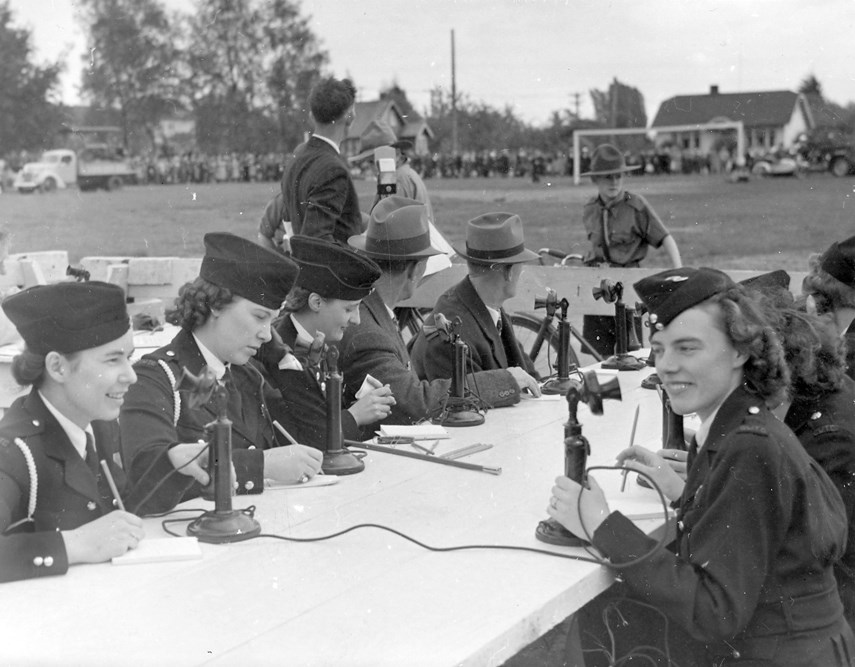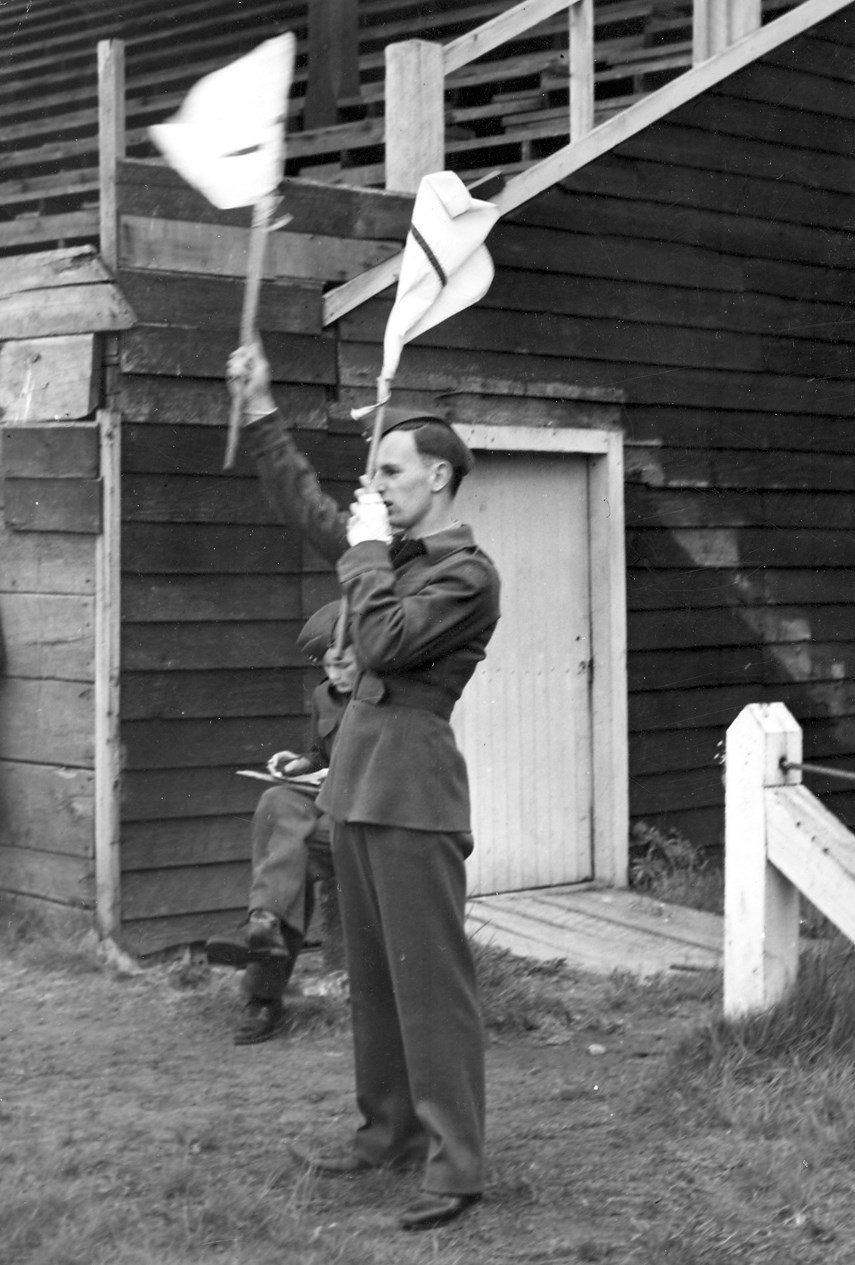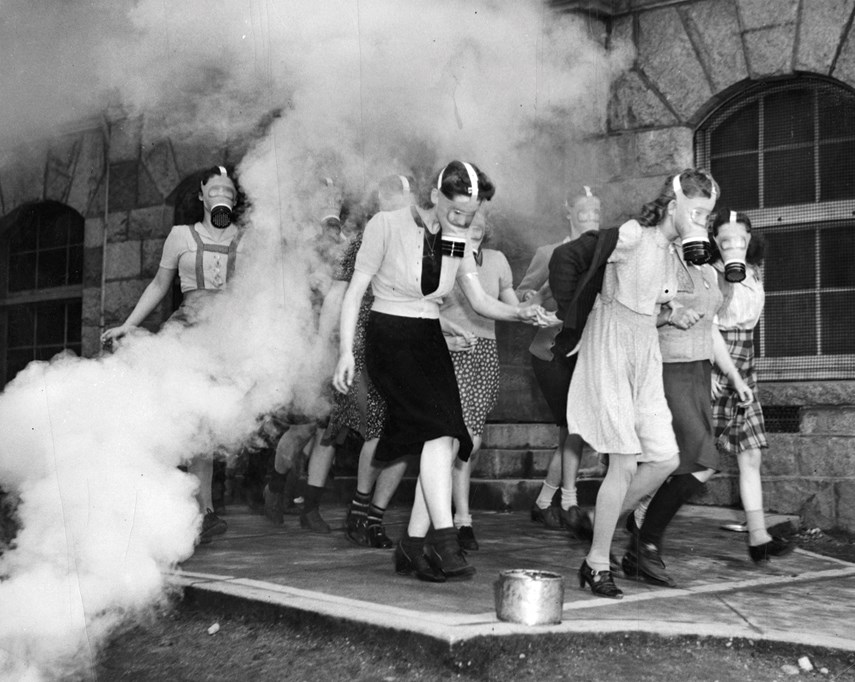In the event a swarm of fighter planes filled the North Shore sky and started dropping bombs, women were asked to remember six words.
“Keep cool and don’t get excited,” the air raid handbook for women recommends. “If you are caught in the open without shelter, lie face down on the ground and protect the back of your head with your handbag.”
That advice is included in the North Vancouver Museum and Archive’s new exhibit: Women & Wartime: Defending North Vancouver 1939-1945. While the Second World War never came closer than Pearl Harbor, the exhibit examines how the war effort touched people’s lives.
As a little girl who was new to North Vancouver, Darlene Jacobi remembers searchlights probing the darkness for an enemy.
“But nobody came to bomb us,” she reports in a 2011 interview with Lori Herman.

Born in Flin Flon, Man., Jacobi moved to North Vancouver as a child. Her uncles joined the army “even though they were supposed to be Mennonite pacifists,” she explains.
Her father, whose flat feet kept him out of the army, got a job at Burrard Dry Dock and the family lived in a wartime house near Fell Avenue, a neighbourhood dubbed Skunk Hollow.
“In a certain season, the scent came out, and all the neighbours laughed and laughed at our garden of skunk cabbage,” she recalls.
Her mother grew strawberries. So many, that Jacobi still couldn’t stand the taste of the berries more than half a century after the end of the war.
Former District of North Vancouver mayor Murray Dykeman remembers the 1940s as a time when cars were scarce, churches doubled as community centres and bacon fat was a movie ticket.
On Saturday afternoons he’d head to the Nova Theatre at 14th Street and Lonsdale Avenue to see a western or The Mark of Zorro.
“Your admission was bringing a tin of bacon fat, a jam tin full,” he says, recalling that a six-inch foil ball made up from packs of cigarettes would also get you through the door.
Speaking to archivist Daien Ide, Clifford Milton Green remembers living half a block from Mahon Park with Jack Benny on the radio and teachers who had the strap.
“They weren’t frightened to use it,” he notes.
There was a timber boom in the 1930s, he says, remembering his dad’s job exporting logs overseas.
“They were sending logs to Germany mostly, some to Japan,” he recalls. “Now of course when the war came that business just dropped dead.”
While his father worked repairing ships, Green helped the war effort as a bike messenger, pedalling to Lonsdale school with a tin hat and a gas mask during air raid drills.

“We had practice blackouts and everybody had to have tar paper or some means to cover their windows so the light didn’t shine out of your homes,” he said in a 2007 interview.
Green’s stories are a mix of boyhood memories and sociological observations.
“We seemed to have more snow in those years,” he says. “But y’know, memories play tricks on you. ... I can remember lots of heavy frosts where the school grounds would rise right up and you would walk on top, crunch, crunch, crunch down through the frost.”
There was one week where Queen Mary cancelled classes because there wasn’t enough coal, he says. He also remembers his uncle’s attic stuffed with Japanese phonograph records. His uncle held onto them for a Japanese friend who was interned.
“This was all waiting for him and it was returned,” Green says.
The exhibit also features a photo of the Yada family, North Vancouver grocers who didn’t come back to the city after losing their home and business during internment.
The exhibit, researched by Sam Frederick, features a variety of perspectives on life during the war.
There’s the air raid handbook that offers women instructions on making a “siren suit” out of ski togs, flat-heeled shoes and a beret. Women were told to wear: “serviceable clothing . . . even if you must sacrifice styles and conventions.”
There were patriotic rallies, victory gardens and salvage drives, Frederick says, noting the women who wanted to serve and others who worked at the Shipyards.
“Once the war was over, all those women lost their jobs,” she notes.
The exhibit also pays tribute to Nancy Hewett, who initiated the Canadian Women’s Training Corps in North Vancouver. Attempts to find relatives have so far been stymied.
There are photos of the bungalows between Second and Sixth streets that housed shipbuilders and artifacts ranging from a gas mask to an advertisement for Victory Bonds. (“When your husband comes home and tells you that he has been asked to buy a Victory Bond but naturally wants to talk it over with you first, don’t say ‘no,’” the pamphlet instructs.)
Jacobi, who went on to teach at Canyon Heights Elementary, remembers scooping up sawdust from the harbour and keeping it dry enough to heat the living room in the family home on Churchill Crescent.
She recalls her mother heating up the kids’ clothes in the oven during the winter.
Green remembers the shortages of butter, meat, coffee, tea and gasoline.

“The sugar ration was the worst,” he says. “There would be a mass rush by the moms to get out to the store to get a couple of jello powders.”
He also recounts the return to something like normalcy when the war ended.
“I gauged things changing by whether you could get Neilsons Jersey Milk chocolate bars,” he says, noting the chocolates weren’t back on the shelves until 1947.
His most vivid wartime memory doesn’t have a thing to do with the war. He was 12 years old on stage at the Nova theatre, playing his violin for a $5 prize. Deviating from his classical repertoire, Green burst into jigs and reels and played “Irish Washerwoman.”
“The place just broke loose and the people thumping their feet on the floor,” he recalls. “Never forgotten such a thing.”
The exhibit can be seen at the North Vancouver Museum and Archives on Institute Road between noon and 5 p.m. Thursdays and Fridays and from 10 a.m. to 5 p.m. Saturdays.



